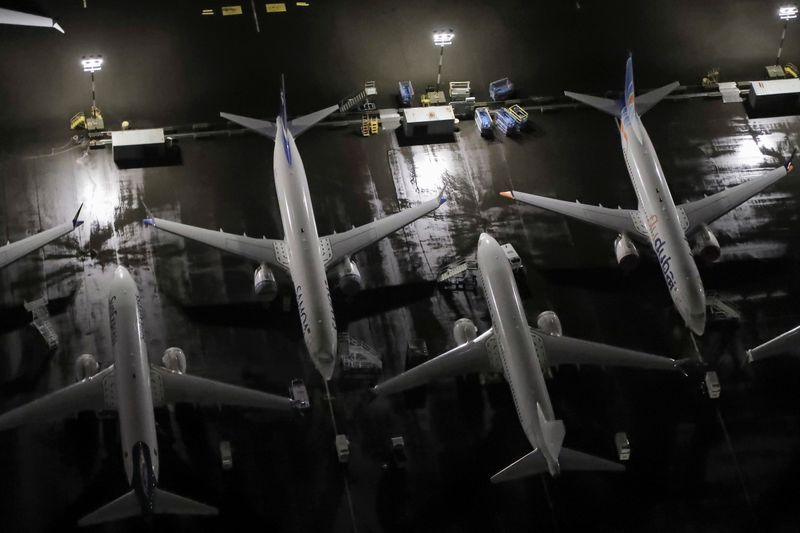
FILE PHOTO: Aerial photos showing Boeing 737 Max airplanes parked at Boeing Field in Seattle, Washington, U.S. October 20, 2019. REUTERS/Gary He/File Photo
December 11, 2019
By David Shepardson
WASHINGTON (Reuters) – U.S. Federal Aviation Administration (FAA) chief Steve Dickson confirmed Wednesday the agency will not allow Boeing Co’s (BA.N> grounded 737 MAX, involved in two fatal crashes in five months, to resume flying before the end of 2019.
Dickson told CNBC in an interview ahead of his testimony before the U.S. House Transportation and Infrastructure Committee that there are nearly a dozen milestones that must be completed before the plane can return to service.
Federal officials told Reuters earlier this week the FAA is not expected to authorize the plane to fly until January at the earliest, citing significant work still to be done. Some U.S. officials think it may not be until at least February that Dickson gives the green light.
Boeing shares fell 2% after Dickson’s comments. Boeing did not say if it had abandoned its prior goal to resume deliveries by the end of 2019 but said it was working “closely with the FAA and global regulators towards certification.”
Dickson is testifying alongside Earl Lawrence, the FAA’s aircraft certification chief.
Others set to appear include a former Boeing employee who raised concerns about 737 production and a former FAA employee who will tell the committee he believes “Boeing applied undue pressure on FAA managers to overrule those managers’ own safety engineers and experts on safety-critical matters,” said Representative Peter DeFazio, the committee chairman.
Boeing says the feeding of erroneous data to a computer system called MCAS that pushed the two planes lower was a common link in two wider chains of events leading to the crashes. Boeing is revising the 737 MAX software to require its MCAS system to receive input from two sensors.
DeFazio cited an FAA analysis before the second fatal crash that suggested a 737 MAX design flaw if uncorrected could result in as many as 15 future fatal crashes over the life of the fleet.
“Despite its own calculations, the FAA rolled the dice on the safety of the traveling public and let the 737 MAX continue to fly until Boeing could overhaul its MCAS software,” DeFazio said.
Once the FAA clears the plane to fly and approves training changes, it will still take U.S. airlines 30 days or more to resume flights. Dickson told CNBC the FAA has not made a decision on pilot training requirements.
The three U.S. carriers that operate the 737 MAX – Southwest Airlines Co <LUV.N>, American Airlines Group Inc <AAL.O> and United Airlines Holdings Inc <UAL.O> – are scheduling flights without use of the aircraft until early March 2020, nearly a year since the plane was grounded after crashes killed 346 people in Indonesia and Ethiopia.
Boeing must still conduct a certification test flight and there are a number of other steps, including technical reviews, that must be completed before the FAA will allow flights to resume.
U.S. lawmakers have been critical of the FAA’s prior decisions to delegate a significant amount of plane certification tasks to Boeing.
“Boeing made egregious errors,” DeFazio said.
“The FAA also failed to do its job. It failed to provide the regulatory oversight necessary to ensure the safety of the flying public.”
The FAA said last week it is not delegating any of the ongoing review to Boeing, and will be the only issuer of airworthiness certificates for all new 737 MAX planes.
Boeing said in November it expected the FAA to certify the 737 MAX, issue an airworthiness directive and unground the plane in mid-December, even as it acknowledged it would not win approval for changes to pilot training until January.
(Reporting by David Shepardson; Editing by Kenneth Maxwell, Mark Potter and Nick Macfie)

